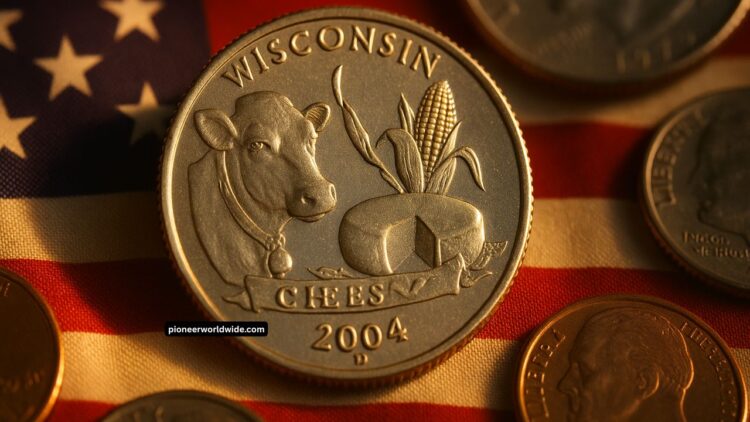A remarkable 2004‑D Wisconsin quarter featuring an Extra Leaf error has recently garnered headlines after selling for $6,000 at auction.
This extraordinary sale highlights the intense collector interest in mint errors and solidifies the coin’s place in numismatic history.
What Makes the 2004‑D Extra Leaf Quarter Special
The 2004 Wisconsin quarter, part of the U.S. Mint’s 50 State Quarters Program, was issued with two major error varieties—High Leaf and Low Leaf—both struck at the Denver Mint.
These errors feature an added leaf on the corn stalk in the reverse design—an unusual mistake that was never part of the official pattern
Experts believe these anomalies occurred when metal shavings or deliberate tampering created a gouge on the die used for striking, causing an extra leaf to appear on each coin minted from it
Auction and Record Sale
| Date | Variety | Coin Grade | Sale Price | Auction House |
|---|---|---|---|---|
| Jan 2020 | Low Leaf | MS‑67 | $6,000 | Heritage Auctions (FUN Signature) |
| Jul 2006 | High Leaf | MS‑66 | $2,530 | Heritage Auctions |
- The record $6,000 sale took place in January 2020, making it the highest verified price for this variety
- Earlier in July 2006, a High Leaf coin graded MS‑66 sold for $2,530
Value Range and Rarity
- Low Leaf (more common):
- Circulated: $30–$100
- Uncirculated: $100+
- High Leaf (rarer):
- Circulated: $50–$75
- Uncirculated: $90–$275+
- PCGS and NGC estimate between 2,000 Low Leaf and 3,000 High Leaf quarters were released
- Mass minting figures show 226.8 million Denver quarters of Wisconsin were produced in 2004
How to Identify an Extra Leaf Error
- Locate the corn stalk on the reverse of the coin.
- Check the left side of the corn ear:
- A High Leaf protrudes upward from the top of the ear.
- A Low Leaf appears beneath, near the wheel of cheese.
- Use magnification and light to spot the extra leaf. The craftsmanship of the error—whether accidental or deliberate—is often debated
Origin and Controversy
- Die gouges are typically caused by metal shavings lodged in the die, producing raised features on coins
- Some numismatists believe that the shapes are too deliberate, suggesting intentional die alteration by a mint employee using tools—though no official admission or arrests have been recorded
- The U.S. Mint never officially commented on these anomalies
Collector Interest & Market Demand
The 2004‑D Wisconsin Extra Leaf quarter has become one of the most sought-after error coins from the State Quarters series.
The combination of rarity, clear visual impact, and auction headlines drives demand. Dealers and collectors are frequently paying hundreds to thousands of dollars for uncirculated specimens
The 2004‑D Wisconsin Extra Leaf quarter remains a numismatic sensation—rare, visually striking, and historically intriguing. With high-grade examples reaching $6,000, it stands as one of the most valuable modern mint-error coins in circulation.
FAQs
Why did the extra leaf appear only on Denver‑mint coins?
All known Extra Leaf varieties were struck at the Denver Mint, likely due to a specific damaged or altered die used only there
How do I differentiate between Low Leaf and High Leaf?
High Leaf emerges above the main corn leaf; Low Leaf appears below it, close to the cheese wheel. Magnification helps verify position.
Are all extra leaf quarters valuable?
Yes, but grade matters. A low-grade circulated coin may be worth $30–$100, while MS‑67 specimens have reached $6,000
